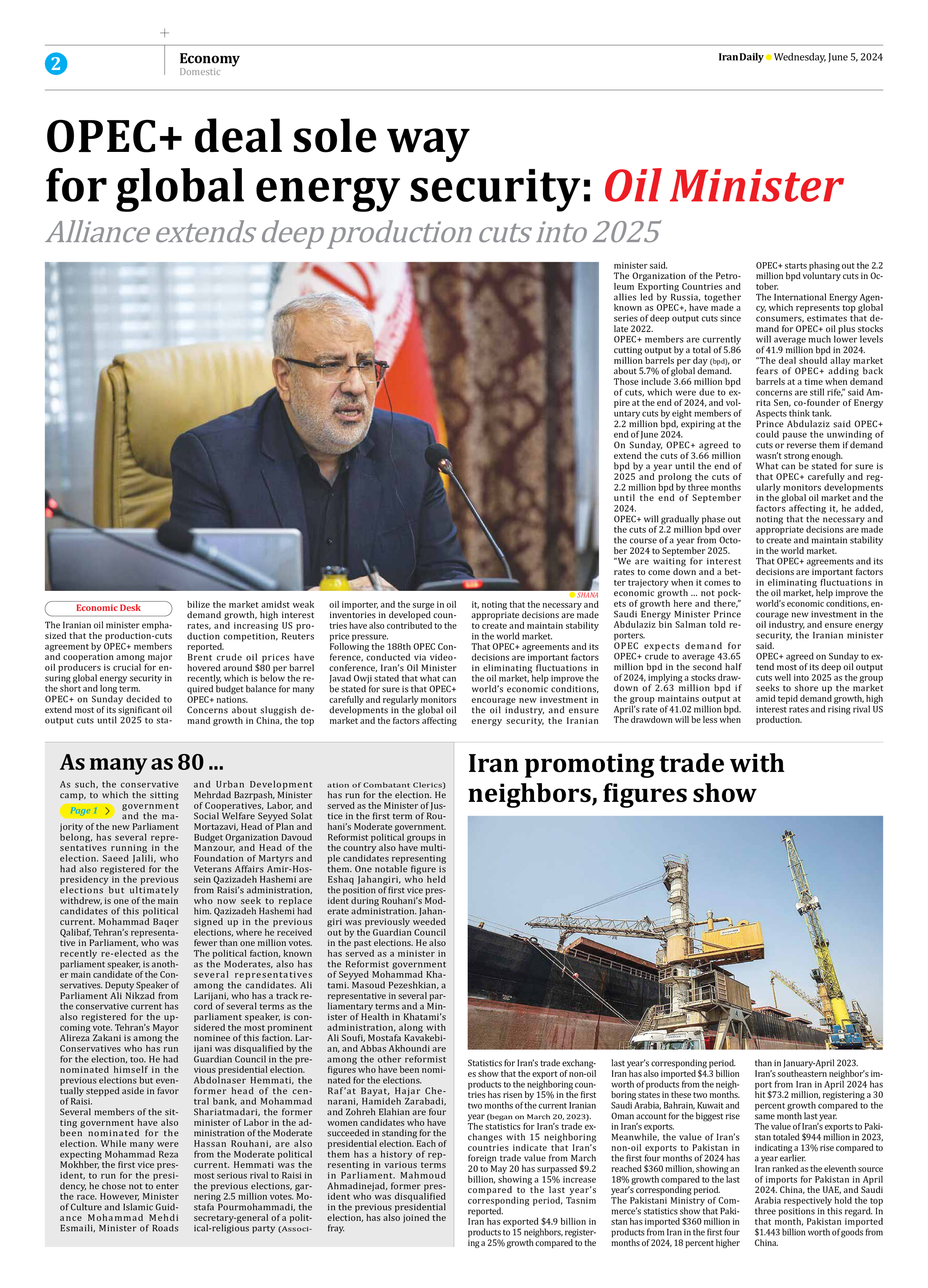
Copy in clipboard...
OPEC+ deal sole way for global energy security: Oil Minister
Alliance extends deep production cuts into 2025
OPEC+ on Sunday decided to extend most of its significant oil output cuts until 2025 to stabilize the market amidst weak demand growth, high interest rates, and increasing US production competition, Reuters reported.
Brent crude oil prices have hovered around $80 per barrel recently, which is below the required budget balance for many OPEC+ nations.
Concerns about sluggish demand growth in China, the top oil importer, and the surge in oil inventories in developed countries have also contributed to the price pressure.
Following the 188th OPEC Conference, conducted via videoconference, Iran’s Oil Minister Javad Owji stated that what can be stated for sure is that OPEC+ carefully and regularly monitors developments in the global oil market and the factors affecting it, noting that the necessary and appropriate decisions are made to create and maintain stability in the world market.
That OPEC+ agreements and its decisions are important factors in eliminating fluctuations in the oil market, help improve the world’s economic conditions, encourage new investment in the oil industry, and ensure energy security, the Iranian
minister said.
The Organization of the Petroleum Exporting Countries and allies led by Russia, together known as OPEC+, have made a series of deep output cuts since late 2022.
OPEC+ members are currently cutting output by a total of 5.86 million barrels per day (bpd), or about 5.7% of global demand.
Those include 3.66 million bpd of cuts, which were due to expire at the end of 2024, and voluntary cuts by eight members of 2.2 million bpd, expiring at the end of June 2024.
On Sunday, OPEC+ agreed to extend the cuts of 3.66 million bpd by a year until the end of 2025 and prolong the cuts of 2.2 million bpd by three months until the end of September
2024.
OPEC+ will gradually phase out the cuts of 2.2 million bpd over the course of a year from October 2024 to September 2025.
“We are waiting for interest rates to come down and a better trajectory when it comes to economic growth ... not pockets of growth here and there,” Saudi Energy Minister Prince Abdulaziz bin Salman told reporters.
OPEC expects demand for OPEC+ crude to average 43.65 million bpd in the second half of 2024, implying a stocks drawdown of 2.63 million bpd if the group maintains output at April’s rate of 41.02 million bpd.
The drawdown will be less when OPEC+ starts phasing out the 2.2 million bpd voluntary cuts in October.
The International Energy Agency, which represents top global consumers, estimates that demand for OPEC+ oil plus stocks will average much lower levels of 41.9 million bpd in 2024.
“The deal should allay market fears of OPEC+ adding back barrels at a time when demand concerns are still rife,” said Amrita Sen, co-founder of Energy Aspects think tank.
Prince Abdulaziz said OPEC+ could pause the unwinding of cuts or reverse them if demand wasn’t strong enough.
What can be stated for sure is that OPEC+ carefully and regularly monitors developments in the global oil market and the factors affecting it, he added, noting that the necessary and appropriate decisions are made to create and maintain stability in the world market.
That OPEC+ agreements and its decisions are important factors in eliminating fluctuations in the oil market, help improve the world’s economic conditions, encourage new investment in the oil industry, and ensure energy security, the Iranian minister said.
OPEC+ agreed on Sunday to extend most of its deep oil output cuts well into 2025 as the group seeks to shore up the market amid tepid demand growth, high interest rates and rising rival US production.







